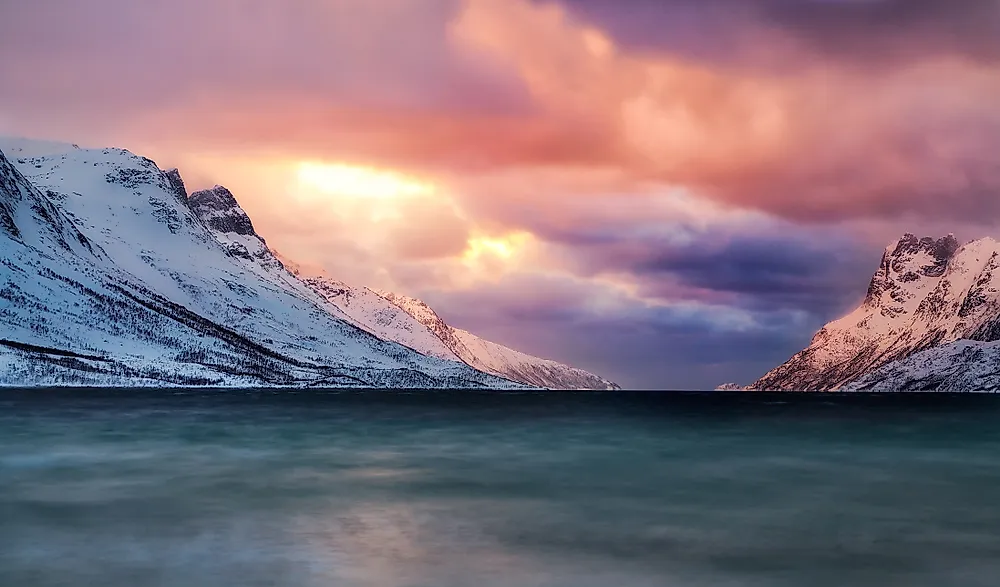How Is the Arctic Region Defined?

The Arctic is a polar region located in the northern part of the globe. The name Arctic is derived from the Greek word artikos, which means bear, and is a reference to the Great Bear of the Ursa Major constellation. The region is dominated by the Arctic Ocean, which covers 6,006,977 square miles. Unlike Antarctica, the Arctic region is usually defined based on the interests and priorities of research scientists and the eight Arctic nations (Canada, Denmark, Finland, Iceland, Norway, Sweden, Russia, and the USA. Key definitions of the Arctic region are based on the Arctic Circle, temperatures, the Arctic tree line, and political and cultural surroundings.
Arctic Circle
Experts define the Arctic region as the area above the Arctic Circle, which is an imaginary line circling the globe at 66° 34' N of the Equator. The Arctic Circle denotes the region beyond which the sun does not set during the summer solstice and does not rise during the winter solstice. In the North Pole, the sun rises and sets once each year. On the northern horizon, just before the summer equinox (approximately March 20), the sun can be seen all day for 186 days until the autumn equinox, when it sets (September 24) and does not rise again until the summer equinox. However, on the shortest day of the year, December 22, the sun can be seen in the Arctic Circle for two hours.
Arctic Treeline
The Arctic region can also be defined as the area above the northern tree line, where the land is frozen and only dotted by shrubs, grass, and lichen. Beyond the topsoil, the ground is permafrost and does not support any trees. Winds in the region can reach 60 mph and precipitation rates are similar to desert conditions, receiving only 20 inches annually.
Arctic Temperature
Researchers use average temperature to define the Arctic region. Under this definition, the Arctic region exists where the average temperatures do not rise above 50 degrees Fahrenheit in the summer. The region experiences temperatures that range between negative 40 °F in winter and 50° F in summer. The coldest recorded temperatures in the Arctic are negative 90.4 °F, which was experienced in Siberia and Oymyakon, Russia on February 3, 1933, while the highest temperature was recorded at 100 °F in Alaska, USA on June 27, 1915.
Political and Cultural Definitions
It is estimated that 1.3 million people inhabit the Arctic region. This population is composed of native and immigrant groups from the Eurozone who depend on hunting. Indigenous groups (Athabaskan and Inupiat Indians) and Russians make up about 70% of the population, while the remaining 30% include immigrants from Canada and Greenland. Land animals in the region include foxes, ground squirrels, muskoxen, geese, and polar bears, while seals, walrus, and various whale species inhabit the Arctic Ocean.
Threats
Global warming caused by pollution is expected to melt substantial amounts of ice in the Arctic region by 2040. Scientists claim that melting ice in the Arctic sea will not raise water levels, but melting glaciers in areas such as Greenland will result in tremendous increases in sea levels worldwide and a decline of coastal land globally. Due to the fragility of the Artcic environment, human activities such as transport, coal mining, and petroleum exploration create Arctic haze, which is the phenomena of a red-brown haze in the sky that can last for a month during the spring season.











